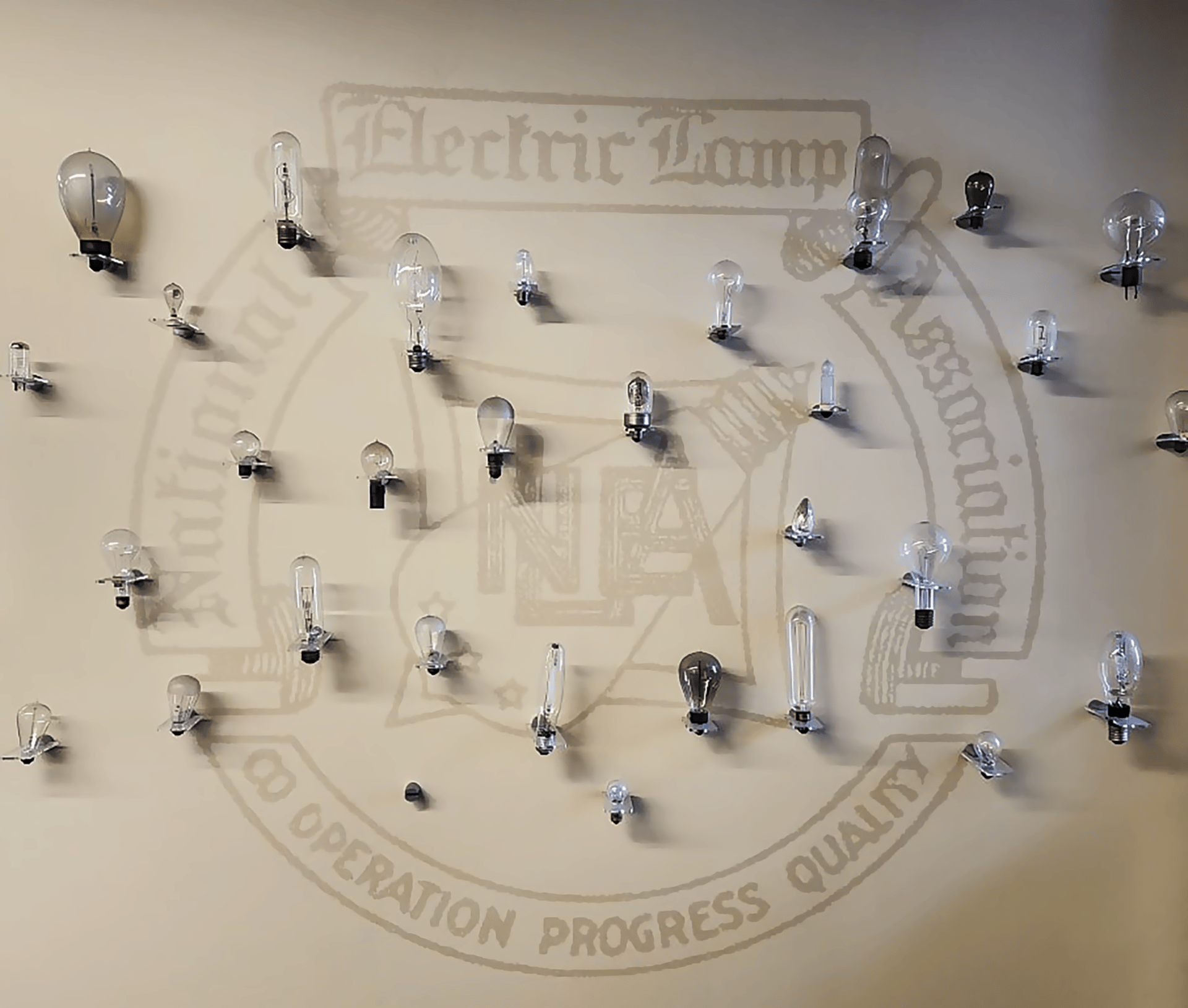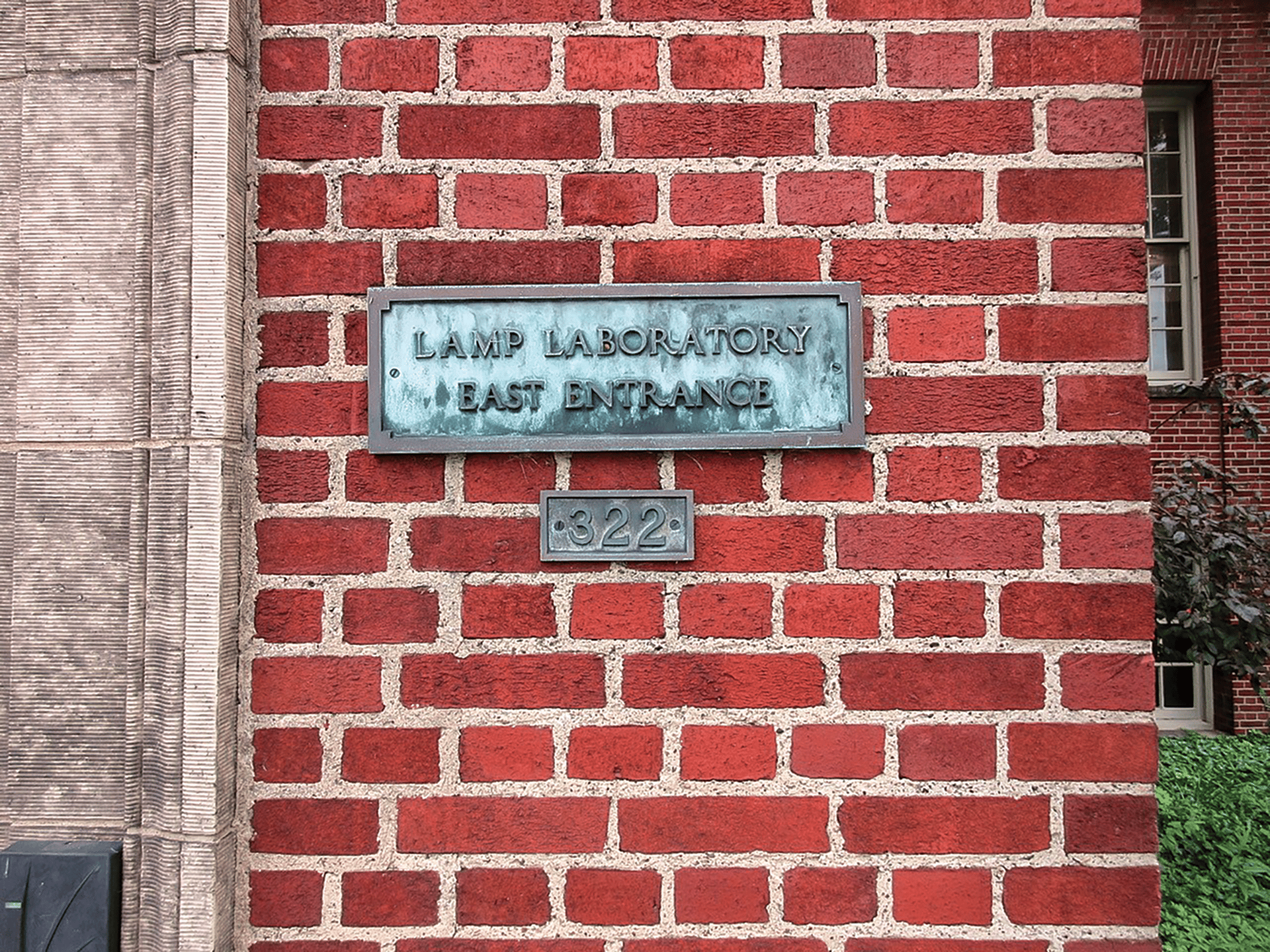bulletin | feature story
GE Lighting at Nela Park: A legacy and a future
GE Lighting helped pioneer the concept of a campus-like industrial park with its operations at Nela Park—and its historical record will be preserved for future researchers and innovators thanks to dedicated work by a group of GE lighting retirees.
By Samantha Dannick and Mechele Romanchock
Since the invention of the first incandescent lamps at the end of the 19th century, there have been enormous advances in brightness and efficiency made possible by advances in glass and other materials.
Many individuals and institutions have played a role in the development of the technology, but “the history of electric lighting cannot be understood without accounting for [General Electric],” emphasizes Harold “Hal” Wallace, curator of the Electricity Collections at the Smithsonian National Museum of American History.
GE Lighting (now a Savant company) is headquartered at Nela Park outside of Cleveland, Ohio. This company helped pioneer the concept of a campus-like industrial park. Being aware of the history of industry and innovation “allows us to understand how we arrived at where we are today [and] identify trends and contexts that help inform choices we make moving forward,” says Wallace.

A display showcasing some historic GE lamp types at the GE Museum of Lighting Innovation at Nela Park in Cleveland, Ohio.
Credit: Jim Dakin
A brief history of GE Lighting
According to Glenn Kohnke, an independent researcher of the history of glass technology, for the last 100+ years, the “primary home of lighting research, technology, commercialization, and education” in the United States was Nela Park. The site gets its name from the National Electric Lamp Association, which was absorbed by GE in 1911.
Nela Park was designed to bring employees and functions from all the different divisions of GE Lighting together in one place to enhance productivity, the communication of ideas, and employee satisfaction. The site contained facilities such as a bank, a pool, a library, and an employee store.
Although many of the amenities were downsized over time, the campus atmosphere remained strong. James “Jim” Dakin, a 37-year veteran of GE Lighting, says, “the best part for me was daily interaction with people from all branches of the business and with all different sorts of expertise. Furthermore, we were all working together toward the same goals.”
Some sources claim that Nela Park was the first designed industrial park, but, as with most innovations, “first-ness” can be a nebulous concept. The humorous but true Sivowitch Law of Firsts articulates, “whenever you prove who was first, the harder you look, you will find someone else who was more first.” Regardless of the park’s “first-ness,” the scale of operations of GE Lighting should not be understated—for the first half of the 20th century, they controlled more than 90% of the U.S. lighting market.
The significance of glass innovation by GE Lighting is well summarized by Dakin. By the end of his career with GE (retiring in 2012), Dakin was chief engineer at GE Lighting, where he oversaw a global team responsible for reviewing and approving all product changes (e.g., introduction, design, manufacturing) prior to product release.
He states, “glass is an important enabling technology for all products up until LED. There were lots of different kinds of glass required for different temperatures, different chemical environments, different glass–metal seals, among other examples. We had to process lots and lots of glass at very high speeds with very few defects. We could not have done this without world leadership in the underlying glass technologies.”
In addition to product innovations, there were numerous process developments at Nela Park. Manufacturing on a large scale required innovations in materials, plant design, equipment, and more. Additionally, the Lighting Institute at Nela Park focused on educating people who worked with lighting from outside of GE. Users, installers, sales personnel, architects, and others were able to attend classes to learn about lighting design and technology.

Group photo of volunteers from heritage organizations, retired GE employees known as the “Nela Nerds,” and current employees from GE Lighting, a Savant Company participating in one of the collaborative group work days to salvage historical records from Nela Park in Cleveland, Ohio. Standing L to R: Mechele Romanchock, Glenn Kohnke, Hal Wallace, Nicholas Zmijewski, Joe Howley, and Jerry Duffy. Sitting L to R: Terry McGowan, Sri Rahm, Jim Dakin, Mary Beth Gotti, Sharon Stewart, and Rolf Bergman.
Credit: Theo Romanchock
Nela Nerds to the rescue
In 2020, Savant Systems, Inc. (Hyannis, Mass.) acquired GE Lighting. Although the headquarters of GE Lighting will remain at Nela Park, Savant decided to downsize its presence at the 92-acre campus and subsequently sold the site to a real estate development firm in 2022.
Throughout the various buildings and storage areas of Nela Park, there was a treasure trove of significant historical materials, some going back to the early 1880s. The materials included marketing and communication materials, photographs, drawings, films, physical artifacts, internal technical reports, and more.
Recognizing the importance of these materials, Gerald Duffy, vice president of engineering at Savant, turned to the self-styled “Nela Nerds,” a group of GE Lighting retirees who have kept in touch via email and Zoom, to determine a way to preserve this enormous amount of history.
In March 2022, the Nela Nerds began reaching out to cultural heritage institutions with the hope of finding future homes for the materials from Nela Park. Dakin, one of the lead Nela Nerds on this project, indicates that the group “focused on museums of a regional or national stature that [they] thought might have specific interest.”
In a series of trips to Cleveland by various parties, the materials were dispersed to several new homes. Regional history materials went to the Western Reserve Historical Society (Cleveland, Ohio). Materials documenting industrial history and electrical innovation went to the Hagley Museum and Library (Wilmington, Del.), the Industrial Archives and Library (Bethlehem, Pa.), the San Antonio Museum of Science and Technology (San Antonio, Texas), and the Smithsonian National Museum of American History (Washington, D.C.). Materials focused on glass went to the Corning Museum of Glass (Corning, N.Y.) and Alfred University Libraries (Alfred, N.Y.).
The Corning Museum of Glass received materials from the (predominantly) non-R&D glass operations, including correspondence, advertising, internal publications, technical drawings of production facilities, photographs, and more. The collection of reports documenting the glass R&D at Nela Park was donated to Alfred University Libraries, home of the Samuel R. Scholes Library of Ceramics, where they will be processed and made available for researchers. (The reports on nonglass research activities were donated to the Hagley Museum and Library.)

Nela Park Building 322, which housed the Lamp Laboratory.
Credit: Glenn Kohnke
While this research is no longer on the cutting-edge of modern lighting and glass production, looking to prior work still provides critical foundational knowledge and potential inspiration for current and future researchers.
Based on an inventory of the donated glass reports, Kohnke remarks, “overall, the value of these reports lies in the fact that they have not seen the light of day in more than 35 years and few, if any, were ever published externally. The reports were written between the 1930s and 1980s, so few of the authors are still alive to recall any of this work or the events surrounding them. This is the only record that remains.”
The future of lighting thanks to Nela Park
Looking back on the amazing history of GE Lighting at Nela Park, the company was, at minimum, among the first in most lighting innovations between Edison’s bulbs and LEDs. The technologies, products, and processes developed there can continue to inform researchers in glass and materials science and in other areas. Beyond the technology, the value of collaborating with people from a wide range of areas and communicating with end-users is also worth remembering.
Thanks to the recognition and support of GE Lighting, the efforts of the Nela Nerds, and the coordination of relevant cultural heritage institutions, the historical record of Nela Park will be preserved for future researchers and innovators.
Processing the collections of donated materials will take some time, but interested researchers can contact the recipient organizations for more information.
Acknowledgements
With thanks to Jim Dakin, Gerald Duffy, Glenn Kohnke, Kevin Martin, Joe Schill, Hal Wallace, and Nick Zmijewski for their insights and assistance with this article and this project, and to GE Lighting, a Savant company.
About the authors:
Samantha Dannick is the engineering and scholarly communication librarian and Mechele Romanchock is the director of libraries at Alfred University Libraries (Alfred, N.Y.). Contact Dannick or Romanchock.
Further reading:
A Century of Light by James A. Cox (1979)

